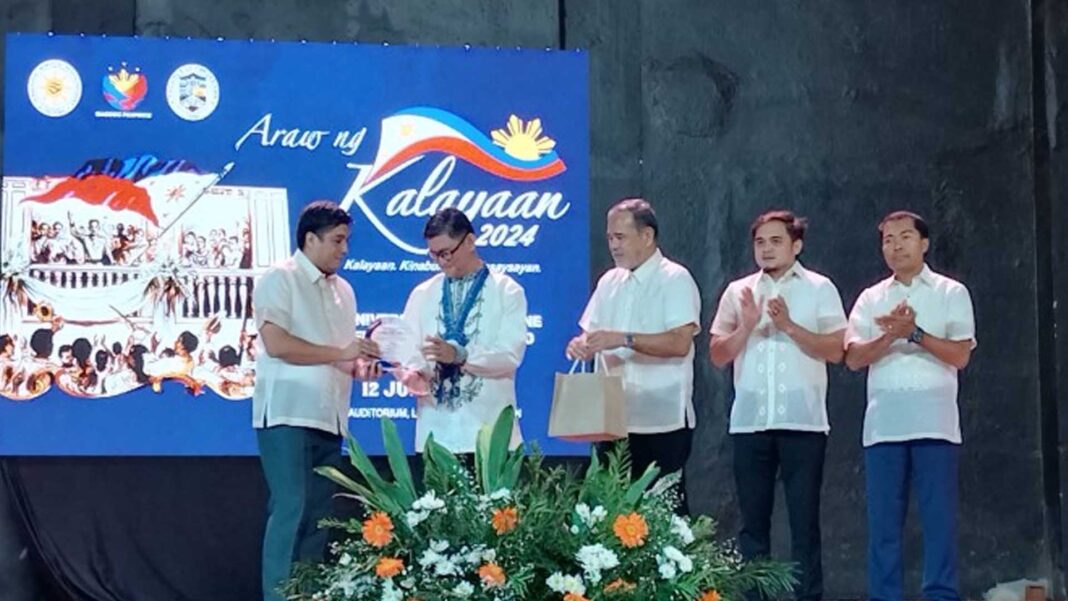Palaris and Malong are common street or building names in Pangasinan but little is known as to who they are and their significance in the country’s fight for independence.
The Pangasinan provincial government is highlighting the two local heroes’ lives and contribution to the country’s independence through an exhibit at the Banaan Pangasinan Provincial Museum as part of the 126th Independence Day celebration.
Dr. Melchor Orpilla, Komisyon ng Wikang Filipino commissioner for Pangasinan language at the Pangasinan State University-Bayambang campus, in his speech during the program narrated the lives of Malong and Palaris.
Andres Malong, who came from a clan of Anacbanua (well-known) in Binalatongan (now San Carlos City), studied in Manila and returned to the province and served as a political leader.
He was an infantry captain of the province during the Spanish era in the country.
Malong became an alcalde mayor or governor, and then maestre de campo, which was the highest rank for a native Filipino.
Orpilla said on Dec.15,1660, Malong led the revolution against the Spaniards with over 4,000 Filipino soldiers.
His influence reached Bolinao, Agno, Masinloc, and even La Union. He even sent soldiers in Ilocos and Pampanga.
On February 1661, he was captured and killed in Lingayen.
Meanwhile, Pantaleon Perez, or most popularly known as Juan dela Cruz or by his nickname Palaris, was from a Timawa clan or the ordinary men.
Orpilla said Palaris led the revolution in Binalatongan or now San Carlos City.
In December 1763, around 10,000 of Palaris’ followers got ammunitions and guns from the enemy. The revolution reached the other parts of Pangasinan, which drew the attention of the Dominicans.
Palaris was betrayed by his own brother and was hanged on Feb. 26, 1765.
“Ang dalawang bayaning ito ng Pangasinan ay nagbigay sa atin ng dalawang mahalagang bagay sa kasaysayan ng bayan — ang pagpapahalaga sa pangkanawa-nawa ng bawat mamayan, at ang pikakasakëy sa ordinaryong mamamayan. Ang dalawang salik na ito ay mahalagang bahagi ng pambansang kamalayan sa kung ano ang tunay na kalayaang ating tinatamasa ngayon (The two local heroes of our province gave us two important things in the history of our country — giving value to independence by every citizen and the cooperation by ordinary people. These two things are part of national awakening on the true meaning of the freedom we now enjoy),” he said.
Orpilla challenged the Pangasinenses to remain aware or informed and cooperative to honor Malong and Palaris’ legacy.
“To the ordinary citizens, in the face of the present challenges, let us join in maintaining responsible voting, in valuing and in implementing human rights especially our rights to have decent, sustainable, and liveable (society), joining together in defending (our country) based on our capabilities (for) the security of our territories,” he said.
Orpilla also asked the leaders of the province to be trustworthy in the position they were given.
“Ang kapakanan nawa ng mamamayan ang siyang natatangi at pangunahing dahilan ng mga pampolitikang desisyon, hindi ng pansarili o panggrupong interes (May the good of the people be the first and foremost reason for political decisions and not for selfish gains),” he said.
Jenrie Del Rosario, from Sta. Barbara town and one of the visitors to the museum, in an interview on Wednesday, said he would not have known the two Pangasinense heroes if not through the exhibit and the speech of the speaker at the commemorative program.
“It is good to know that Pangasinense men like them also has contribution to our country’s independence,” he said. (PNA)



















